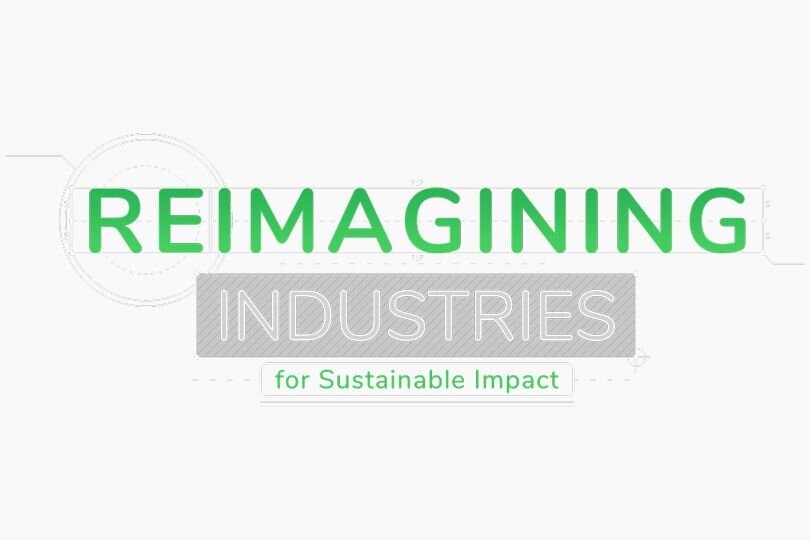Reimagining industrial water for sustainable impact
- By Barbara Frei
- 17 Mar 2025
- 4 min read
people live in water-stressed areas
of freshwater is used by industries
water demand will exceed supply by 40%
Water is the backbone of our existence. Yet, we are facing a global water crisis that is becoming increasingly visible. According to the United Nations, over 2 billion people live in water-stressed areas. As the global population is projected to grow from 8.2 billion today to 10.4 billion by 2100, the demand for water will only increase, while the amount of available freshwater remains constant.
Climate change is exacerbating the water crisis. Some regions experience prolonged droughts, while others face devastating floods. The recent wildfires in Southern California are also a blatant reminder of this water crisis. Additionally, water pollution is a significant issue, with countries like Indonesia, India, and China hosting some of the most polluted rivers.
Freshwater, whether "blue" water found in rivers, lakes, and groundwater, or "green" water stored in soil and biomass, is limited. This vital resource is essential for our survival, economic development, and human well-being. Agriculture relies on water for food production, healthcare for hygiene and sanitation, and industries for cooling, processing, and cleaning. Despite its importance, we have spent decades handling water inefficiently, failing to recognize its value, and consuming it excessively across all regions and sectors.
Agriculture and industry, which consume the majority of freshwater, have a responsibility to manage water sustainably. Industries alone use 20% of freshwater and contribute to 70% of water pollution.
Thus playing a crucial role in tackling the water crisis by adopting water circularity practices, that are essential for addressing water scarcity as they minimize the extraction of freshwater and reduces wastewater discharge. This approach allows industries to capture rainwater, reuse greywater – water that already has been used domestically, commercially and industrially – and recycle wastewater, significantly decreasing the amount of untreated water released into the environment.
These practices not only conserve water but also provide significant economic advantages.
By implementing water reuse and recycling methods, industries can drastically reduce their water consumption, lower operational costs and mitigate financial risks associated with water scarcity and pollution.
They will also attract environmentally conscious consumers and investors, and enhance their brand reputation, all while contributing to ecological balance and preservation of natural water sources for future generations.
The World Economic Forum estimates that by 2030, water demand will exceed supply by 40%. The increasing demand for digital transformation, such as the use of EV batteries and chips, drives the mining and semi-conductors manufacturing industries and their water-intensive processes. And demand in other water hungry industries, such as energy and chemicals, and consumer packaged goods, will not diminish. Therefore, we really don’t have a drop to waste, and innovative water management solutions are crucial.
Regulations, like those in the European Union, are pushing industrial companies to improve their water management practices. But it’s not only about the stick, it’s also good business management. The near-term risk of inaction is far greater than the actual investment needed to implement those next generation of solutions. Implementing responsible water management not only addresses environmental concerns but also provides financial benefits.
We must develop solutions that reduce water usage and enhance water recycling. Technology, digitalization, and artificial intelligence (AI) offer promising ways to achieve this. Digital solutions enable organizations to collect, contextualize, and analyze water usage data. AI models can predict future needs and scenarios, optimize water treatment, and prevent leaks. Predictive maintenance, supported by services like EcoCare, can foresee equipment failures and schedule maintenance accordingly.
Schneider Electric supports water companies, like our partnership with Enterprise Automation, in reducing freshwater intake, maximizing water recycling, cutting operational costs, and enhancing sustainability. For example, Aquapolo, Brazil's largest wastewater treatment plant, produces 1,000 liters of water per second by reusing water from petrochemical processes. This plant provides drinking water for over 500,000 residents.
By leveraging IoT sensors and advanced analytics, our EcoStruxure platform integrates data from various sources, providing a comprehensive view of water usage and enabling informed decision-making. This holistic approach not only improves operational efficiency but also enhances resilience against water-related risks, ensuring a sustainable usage.
Water is a catalyst to safety, health and economic empowerment. Proper water management can turn farming and food production into carbon sinks – a way to remove carbon from the atmosphere, a much needed complementary solution to reducing emissions, contributing to a net-zero economy by 2050.
Responsible water practices create measurable value by saving money, energy, and reducing chemical consumption in water treatment. Whether you do it for the planet, or you do it for the wallet, all these solutions have a bottom-line impact, in financial, environmental, and social benefits.
Smart companies recognize the importance of investing in water resilience. By doing so, they mitigate risks, get regulatory support, and protect their brand. Those who move first and swiftly will be the ones who remain standing.
Watch the Industrial Water episode of our “Reimagining Industries for Sustainable Impact” docuseries with NBCU Catalyst.
To learn more about digital and AI solutions in action for sustainability and efficiency, explore our full docuseries.

Latest in Technology and Innovation
How circular business models drive resilient growth
How circular business models drive resilient growth
Maximizing the potential of smarter, better, circular strategies
The potential of small and mid-size buildings to drive sustainability





